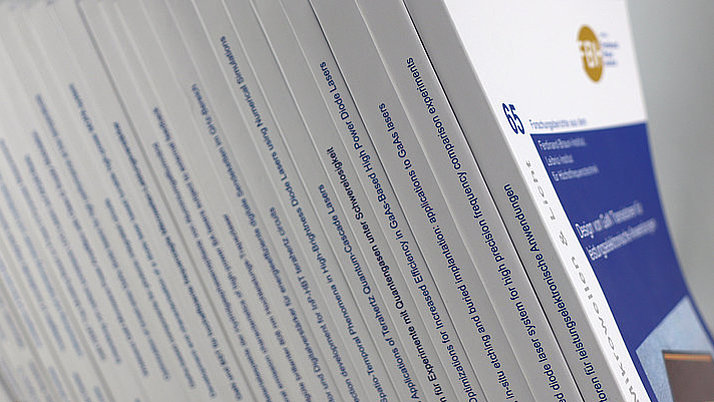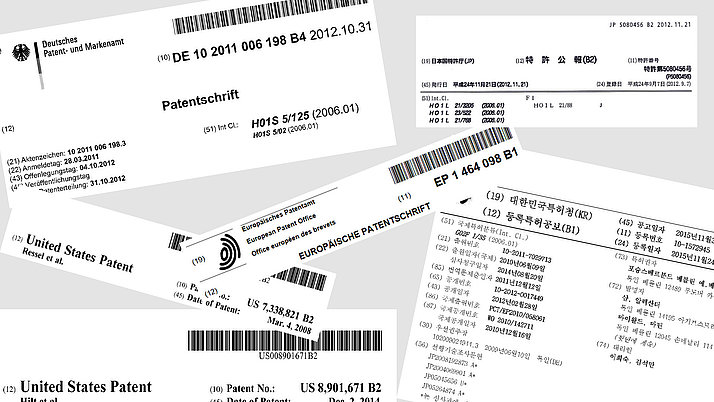Effect of Electron Blocking Layer Doping and Composition on the Performance of 310 nm Light Emitting Diodes
T. Kolbe1,2, A. Knauer1, J. Rass1,2, H.K. Cho1, S. Hagedorn1, S. Einfeldt1, M. Kneissl1,3 and M. Weyers1
Published in:
Materials, vol. 10, no. 12, pp. 1396 (2017).
Abstract:
The effects of composition and p-doping profile of the AlGaN:Mg electron blocking layer (EBL) in 310 nm ultraviolet B (UV-B) light emitting diodes (LEDs) have been investigated. The carrier injection and internal quantum efficiency of the LEDs were simulated and compared to electroluminescence measurements. The light output power depends strongly on the temporal biscyclopentadienylmagnesium (Cp2Mg) carrier gas flow profile during growth as well as on the aluminum profile of the AlGaN:Mg EBL. The highest emission power has been found for an EBL with the highest Cp2Mg carrier gas flow and a gradually decreasing aluminum content in direction to the p-side of the LED. This effect is attributed to an improved carrier injection and confinement that prevents electron leakage into the p-doped region of the LED with a simultaneously enhanced carrier injection into the active region.
1 Ferdinand-Braun-Institut, Leibniz-Institut für Höchstfrequenztechnik, Gustav-Kirchhoff-Str. 4, 12489 Berlin, Germany
2 UVphotonics NT GmbH, Gustav-Kirchhoff-Str. 4, 12489 Berlin, Germany
3 Institute of Solid State Physics, Technische Universität Berlin, Hardenbergstr. 36, 10623 Berlin, Germany
Copyright © 1996-2017 MDPI AG (Basel, Switzerland). Personal use of this material is permitted. However, permission to reprint/republish this material for advertising or promotional purposes or for creating new collective works for resale or redistribution to servers or lists, or to reuse any copyrighted component of this work in other works must be obtained from the MDPI AG.
Full version in pdf-format.


